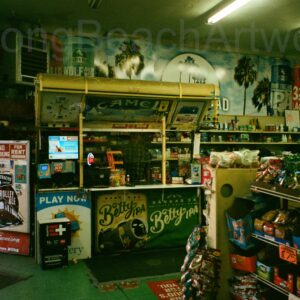Provided by City News Service
A regional stay-at-home order in effect across
Southern California due to surging COVID-19 hospitalizations is expected to be
formally extended tomorrow, continuing a ban on all gatherings of people from
different households and strict capacity limits at many businesses.
The order, which covers an 11-county Southern California area, took
effect at 11:59 p.m. Dec. 6 and was set to expire Monday. But with the region’s
intensive-care unit capacity at hospitals still effectively listed at 0%, Gov.
Gavin Newsom said the order is all but certain to be extended.
A formal announcement had been expected Monday, but Newsom said the
state was still compiling hospital and case data, and completing hospital-
demand projections for the next four weeks. He said the official announcement
on extending the order will be made Tuesday by Dr. Mark Ghaly, the state’s
Health and Human Services secretary.
Newsom noted that COVID hospital admissions have begun to plateau
across much of the state — with the exception of Southern California, with Los
Angeles, Riverside and San Bernardino counties continuing to be the hardest
hit.
Los Angeles County has rapidly become the epicenter of the pandemic in
the state, with the state reporting more than 7,100 COVID-19 patients in
hospitals, including more than 1,400 in intensive-care unit beds. Newsom said
96% of Los Angeles County hospitals diverted ambulances to other facilities at
some point over the weekend due to overcrowding in emergency rooms — up from a
normal average of 33% of hospitals going on diversion.
According to the governor, Los Angeles County hospitals on average
spent 16 hours on diversion over the weekend, unable to find space for
emergency patients.
The Southern California region covers Los Angeles, Orange, Riverside,
San Diego, Imperial, Inyo, Mono, San Bernardino, San Luis Obispo, Santa Barbara
and Ventura counties. Most broadly, the order bars gatherings of people from
different households.
Under the order, the following businesses/recreational facilities were
forced to close:
— indoor recreational facilities;
— hair salons and barbershops;
— personal care services;
— museums, zoos, and aquariums;
— movie theaters;
— wineries;
— bars, breweries and distilleries;
— family entertainment centers;
— cardrooms and satellite wagering;
— limited services;
— live audience sports; and
— amusement parks.
Schools with waivers can remain open, along with “critical
infrastructure” and retail stores, which will be limited to 20% of capacity.
Restaurants are restricted to takeout and delivery service only. Hotels are
allowed to open “for critical infrastructure support only,” while churches
would be restricted to outdoor only services. Entertainment production —
including professional sports — would be allowed to continue without live
audiences.
Four of the five regions carved out by the state are under stay-at-
home orders, covering 98% of the state’s population. Only far northern
California is not under a stay-at-home order.
The order was triggered in each area when the region’s ICU bed
availability dropped below 15%. In some counties, the official ICU bed
availability of 0%. That percentage does not mean that there aren’t any ICU
beds available, since the state adjusts the number based on the ratio of COVID-
19 patients being housed in the units.








